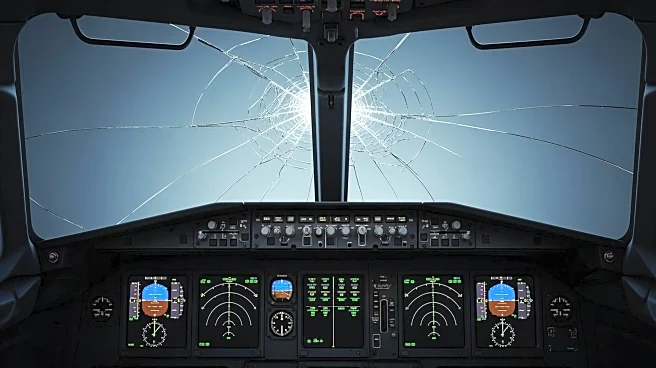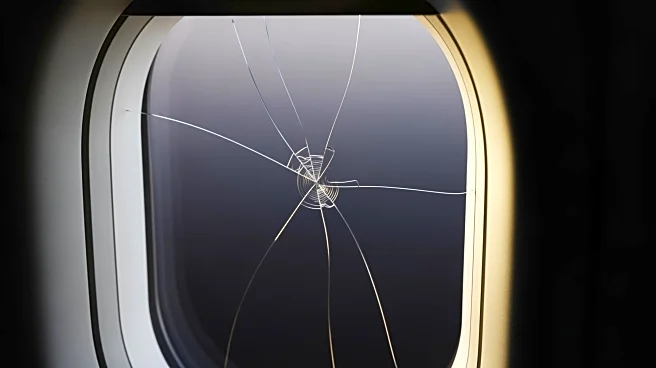What's Happening?
A United Airlines Boeing 737 MAX 8, operating flight UA1093 from Denver to Los Angeles, was forced to divert to Salt Lake City after a windshield crack was discovered mid-flight. The incident occurred
on October 16, 2025, with 140 passengers and crew on board. The aircraft descended from 36,000 feet to 26,000 feet before safely landing at Salt Lake City International Airport. Passengers were later rebooked on a replacement aircraft to complete their journey to Los Angeles, resulting in a six-hour delay. The unusual aspect of this incident is the speculation surrounding the cause of the windshield crack, with scorch marks and bruising on the pilot's arm suggesting a high-energy impact. Aviation enthusiasts have speculated that space debris or a small meteorite could be responsible, although these claims remain unverified. The Federal Aviation Administration (FAA) is investigating the incident.
Why It's Important?
The incident highlights the potential vulnerabilities in aviation safety, particularly concerning unexpected high-energy impacts. While aircraft windshields are designed to withstand significant stress, the possibility of space debris or meteorite impacts presents a rare but serious safety concern. This event underscores the importance of robust safety protocols and the need for ongoing research into protecting aircraft from such anomalies. The incident also raises questions about the preparedness of airlines and regulatory bodies to handle extraordinary situations that fall outside typical mechanical failures or bird strikes. The FAA's investigation will be crucial in determining the cause and preventing future occurrences, impacting airline safety standards and passenger confidence.
What's Next?
The FAA's investigation will focus on identifying the cause of the windshield crack, with findings potentially influencing future safety regulations and aircraft design standards. United Airlines and other carriers may review their safety protocols and training to better prepare for similar incidents. The aviation industry will likely monitor the investigation closely, as the outcome could lead to changes in how airlines address and mitigate risks associated with high-energy impacts. Additionally, the incident may prompt discussions on the need for enhanced tracking and mitigation strategies for space debris, involving collaboration between aviation authorities and space agencies.













